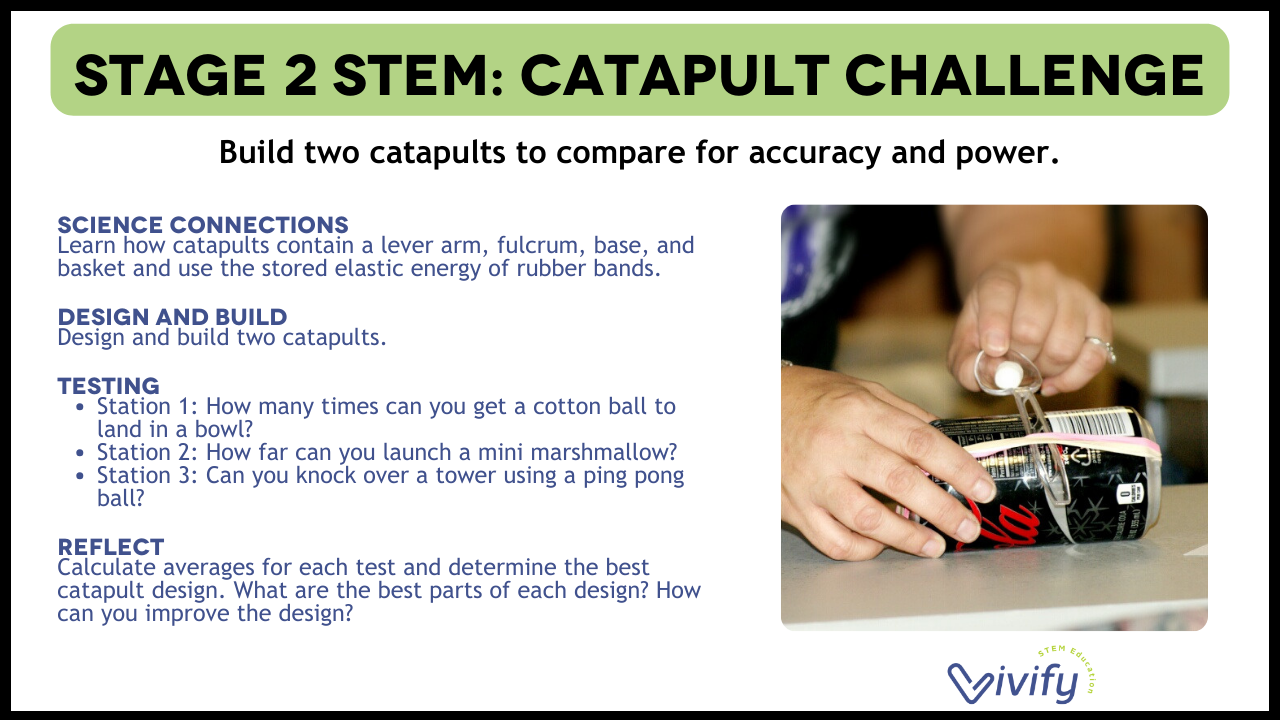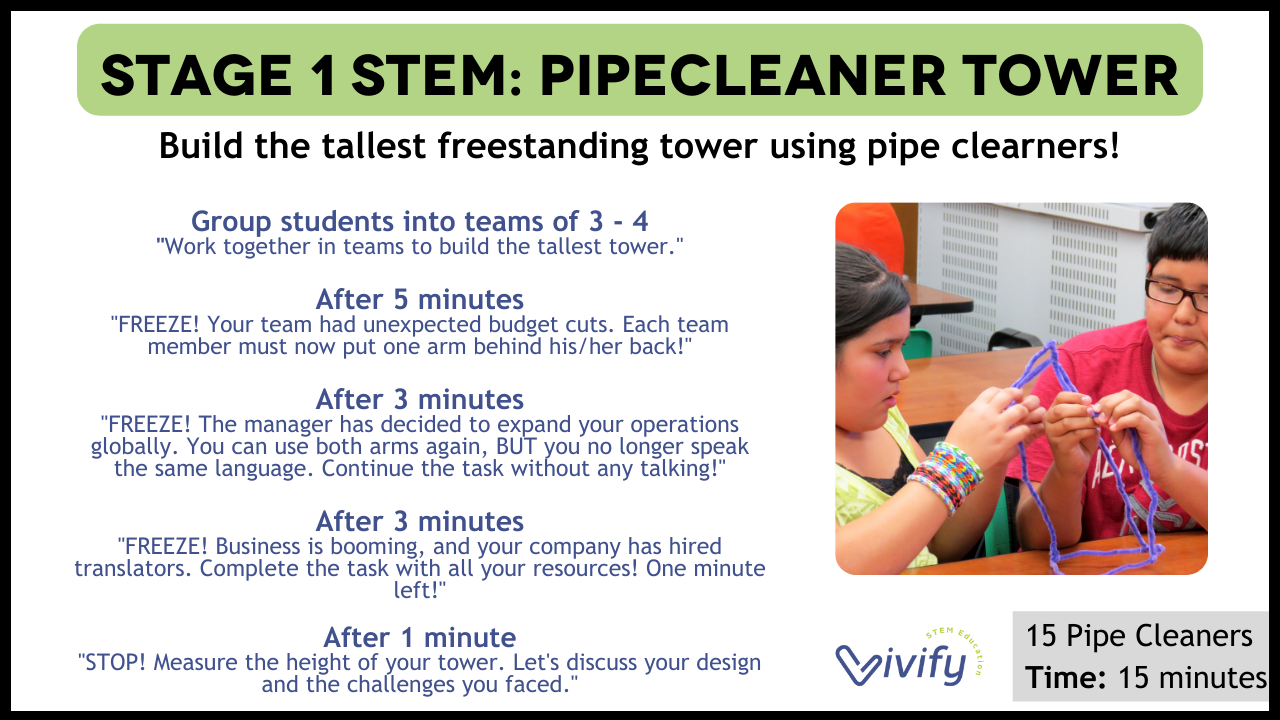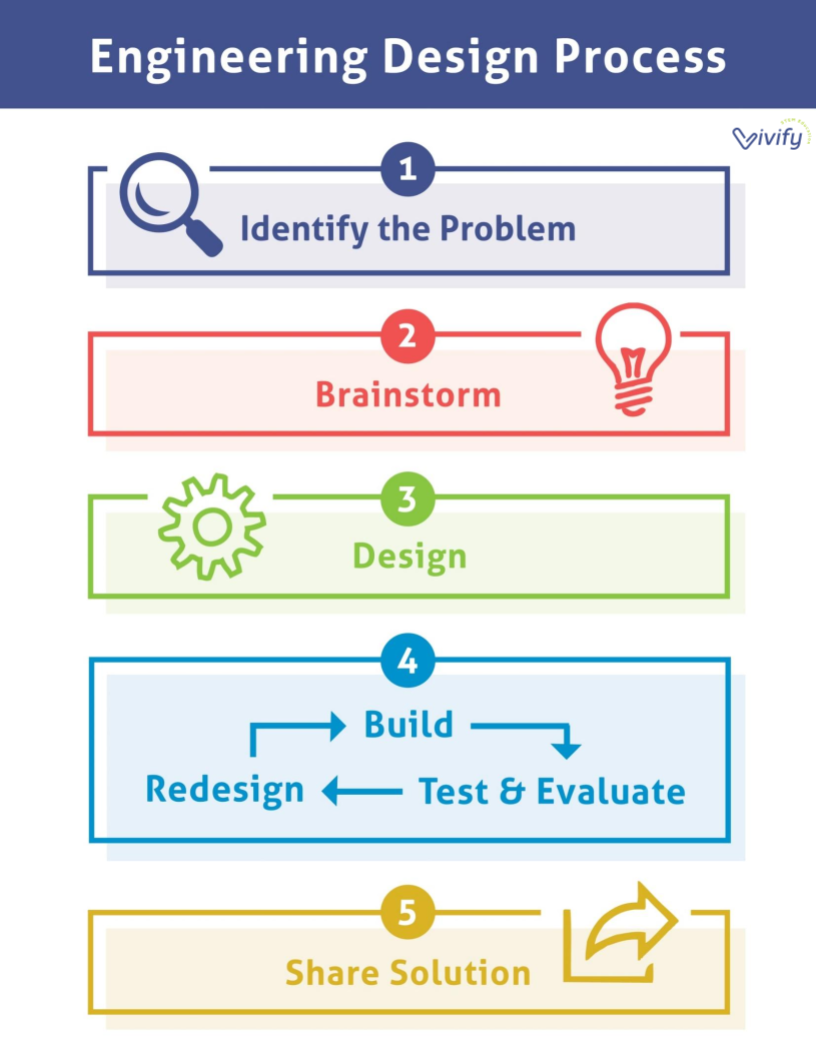Not all STEM is Equal: 3 Stages of STEM Education
February 20, 2017
Updated February 2024
Post by Natasha Wilkerson
STEM education is sweeping the nation. From robotics competitions to coding games, school districts are scrambling to provide STEM programs while teachers sift through thousands of Pinterest pins in search of quality activities. As a STEM Director, I am always looking for new curriculum ideas, but my biggest frustration is the wide-range of activities that are labeled "STEM." Building a tower from spaghetti and tape is categorized the same as programming a LEGO® MINDSTORMS® to navigate a maze. One project takes 10 minutes while the other requires weeks of critical thinking and learning a programming language. We need further clarification to distinguish these levels in STEM education. To help guide educators and administrators in the implementation of curriculum and development of programs, we propose the following 3 stages of STEM Education.
Read below for:
Overview of 3 Stage of STEM
Example activities for each stage
Engineering design poster
Slides to present the 3 Stages of STEM to other teachers or administrators
Download a handout on the 3 Stages of STEM
Want to share the 3 Stages of STEM with other teachers?
Share this video on the 3 Stages of STEM (part of a keynote presentation at the STEM 4 Innovation conference)
Download the flyer on the 3 Stages of STEM
Access slides to implement your own professional development session on the 3 Stages of STEM! Access an editable link in our free resource library.
Do you love podcasts? Listen to us on The STEM Space podcast discuss the 3 Stages of STEM! Find The STEM Space on iTunes or Spotify or click here to listen directly from our website.
Stage 1: Building Challenges
From building the tallest tower of index cards to flying a paper airplane, stage one STEM challenges are the most basic activities. These challenges do not have an obvious connection to math and science concepts and at first may seem like superficial activities. However, they are important primary activities that serve to build a foundation of skills in problem solving, teamwork, communication, and grit.
Pinterest is filled with Stage 1 STEM Challenges with the most popular being the tower challenges. During our afterschool STEM program, we use simple STEM challenges as icebreakers. Our favorite is the pipe cleaner tower challenge, shown below. Students work in teams to build the tallest tower, and through this challenge, they learn how to work in a group, discover communication solutions, effectively use the materials, and persevere despite difficulties and failure.
Need Stage 1 STEM ideas? Shop our store here or click below for a icebreaker bundle of 50+ activities!
Stage 2: Engineering Design Challenges
In stage 2, students apply math and science concepts to problems using the engineering design process. Instead of immediately building, students are systematically guided through a process of brainstorming, design, building, testing, re-design, and sharing their solutions.
Engineering Design Process
Stage 2 STEM challenges revolve around the engineering design process framework shown below. While this is presented as a step-by-step process, in reality, this is a messy endeavor of brainstorming ideas, apply scientific thinking, reflecting on testing results, developing new ideas, tinkering with materials, and finally developing a solution that meets initial criteria. Read more about the design process here. This can be a good initial framework to help students understand that a successful design takes work, perseverance, and often starting over with new ideas!
Engineering Design Process Poster
Want an editable engineering design process poster for your classroom? Grab it in our free resource library!
Stage 2 Example: Catapult Challenge
Our most popular product, the catapult challenge, is a great example of this stage. Students apply knowledge of elastic potential energy to design a catapult device to either hit a target or maximize distance. During the testing phase, students analyze catapult designs through graphing results, averaging data, and comparing results of different launch angles. This process enhances student critical thinking skills while integrating math and science skills into an engaging hands-on engineering project. Real-world connections further enhance curriculum -- including discussion of engineering careers, connection to real-life catapults used on aircraft carriers, and historical catapults in warfare.
Click through the gallery below to find some Stage 2 STEM ideas to try out in your classroom!



Important note: many popular challenges circulating online do not have the rigor of Stage 2 STEM, including a math and science connection. Promoting only Stage 1 activities can quickly lead STEM to be dismissed as superficial and unnecessary. However, many teachers complain of a lack of quality STEM curriculum, and we are slowly trying to fill this gap along with other motivated educators. We believe that most classroom STEM activities should fall into Stage 2. Teachers and curriculum writers should commit to connecting STEM activities to relevant math and science standards and properly guide students through the entire engineering design process.
Stage 3: Long-Term Projects
Robotics competitions have taken over the education world! Stage 3 STEM involves long-term projects such as FLL robotics, where math and science concepts are applied to solve open-ended problems using the engineering design process. Students should have completed Stage 1 and 2 projects to build a foundation of skills and understanding of the engineering design process. Stage 3 challenges students to dive deeply into a problem, rigorously apply the engineering design process, learn new technology and present results.
Stage 3 STEM Examples
Stage 3 STEM is more than just a robotics competition! Vivify has many projects, from designing a habitat on Mars to launching a weather balloon to the edge of space!
Garden Design Project: Students learn about drawing designs to scale, plant anatomy, botany, plant spacing, and companion planting while designing their garden plan. They then use the engineering design process and their garden designs to build a 3D model of their school garden. Read more here.
Space Colony Competition: Another example of a design competition is the annual Space Colony Competition that Space Club organizes each year. Students are challenged with designing a long-term human habitat on the Moon or Mars to keep humans happy and healthy. Students research the atmosphere, learn about community planning, and design engineering and mental health solutions. They answer questions like: How will your colony survive a dust storm? How will you entertain colonists for a long mission? Read all about it here!
Weather Balloon Project: Take your students on an unforgettable journey to the stratosphere! What can be more exciting than launching a balloon to the edge of space and seeing footage of the Earth from above? A weather balloon project (also known as High Altitude Balloon or HAB) involves designing a payload and using a helium balloon to send an experiment up to 100,000 feet into the stratosphere! Read more here.
National Parks Project: Every 4th-grade student in the United States can get a National Park pass. What better way to get your students vested in their learning than by letting them plan a National Park trip that their family could potentially take them on? From researching national parks to then designing their own new National Park adventure! Read more here.
Sharing the 3 Stages of STEM Education
A successful year-long STEM program should guide students from Stage 1 to Stage 3 STEM challenges to build a foundation of skills and confidence. An awareness of the distinct stages of STEM allows for teachers to easily incorporate Stage 1 activities into their classroom knowing that it isn't expected or even recommended to start with Stage 2 or 3 STEM challenges. Often, teachers assume a STEM activity must include very technically challenging skills such as programming or electrical engineering, and they are afraid to have anything to do with STEM. We challenge all teachers to incorporate some level of STEM into their curriculum!
A note about career connection: At Vivify, we believe that all STEM challenges should incorporate STEM career connections and present problems based on real-world scenarios. Students then become excited about STEM pathways and are inspired to pursue STEM careers, thus fulfilling an important goal of STEM education.
Want to share the 3 Stages of STEM with other teachers?
Share the video below on the 3 Stages of STEM (part of a keynote presentation at the STEM 4 Innovation conference)
Download the flyer on the 3 Stages of STEM
Access slides to implement your own professional development session on the 3 Stages of STEM! You can also use this template link to modify the presentation.
3 Stages of STEM Infographic
The stages of STEM is a new topic of discussion, so below we have created an infographic to aid in your journey through the STEM stages. We would love to hear any comments you have below!
Infographic on the Vivify STEM stages™
©Vivify 2017








